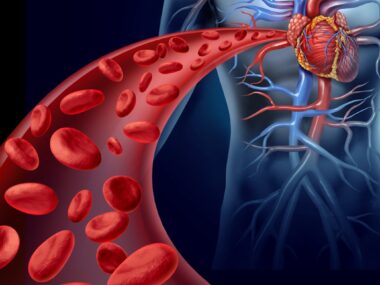Lesions in Abdominal Aorta Found as Symptoms of Vascular EDS in Study
Clinicians urged to 'pay special attention' to abdominal aorta arteries
Written by |

Lesions in the abdominal aorta — the lower part of the large blood vessel that carries blood from the heart out to the rest of the body — are common among people with vascular Ehlers-Danlos syndrome (vEDS), a new study highlights.
“The main finding of the present study is that in patients with vEDS, arterial involvement is most common in the branch arteries of the abdominal aorta, more prevalent than in the [upper] aorta,” the researchers wrote.
“Arterial involvements” were described as aneurysms, dissections, and ruptures. The team noted that among such cases — documented in vascular EDS patients both with and without symptoms — 80% were in branches of the abdominal aorta.
These findings should guide physicians in caring for vEDS patients, the researchers said.
“In daily clinical practice, clinicians caring for patients with vEDS should pay special attention to the branch arteries of the abdominal aorta rather than to the [upper] aorta,” they wrote.
Investigating arterial lesions in vEDS
The study, “Vascular involvements are common in the branch arteries of the abdominal aorta rather than in the aorta in vascular Ehlers-Danlos syndrome,” was published in the journal CJC Open.
This disease type is characterized by fragility in blood vessel tissues, and bleeding in vEDS commonly involves damage to the arteries — the blood vessels that carry oxygen-rich blood from the heart to the body’s tissues.
The researchers noted that while vascular EDS has a “poor prognosis because of associated vascular complications” — which can lead to symptoms that include serious bleeding — the most prevalent arterial problems in these patients “are not well known.”
Now, the team reported on the types of artery lesions that were documented among 20 vEDS patients followed at their clinic in Japan.
“This study aimed to clarify which arterial lesion is most prevalent in vEDS,” the scientists wrote.
For the study’s patients, the average age at first vEDS-related hospital admission was 29, and the average follow-up time was more than five years. All but three of the patients took Edsivo (celiprolol), an experimental vEDS therapy developed by Acer Therapeutics that’s now in Phase 3 clinical testing (NCT05432466; this study is still recruiting participants). Acer was not involved in the present study.
Among all participants, a total of 27 arterial lesion events that required hospital admission were documented. Two-thirds (67%) of these — 18 lesions in 10 patients — occurred in the abdominal aorta, where smaller arteries branch off of the large aorta to deliver blood to the digestive tract and other organs.
Of all 54 arterial lesions — whether or not they required hospitalization — 43 occurred in the abdominal aorta. Unlike in Marfan syndrome, another connective tissue disorder, the size of the abdominal aorta was not altered in these patients.
“Overall, branch arteries of the abdominal aorta accounted for 80% of the 54 cases with arterial involvement and were the most common arteries for lesion development,” the researchers wrote.
Lesions in the lungs and bowel requiring hospitalization also were relatively common, each reported in eight patients. Over follow-up, three patients (ages 34 to 41) died due to suspected arterial lesion ruptures.
The researchers noted that this study is limited by the small number of patients.






